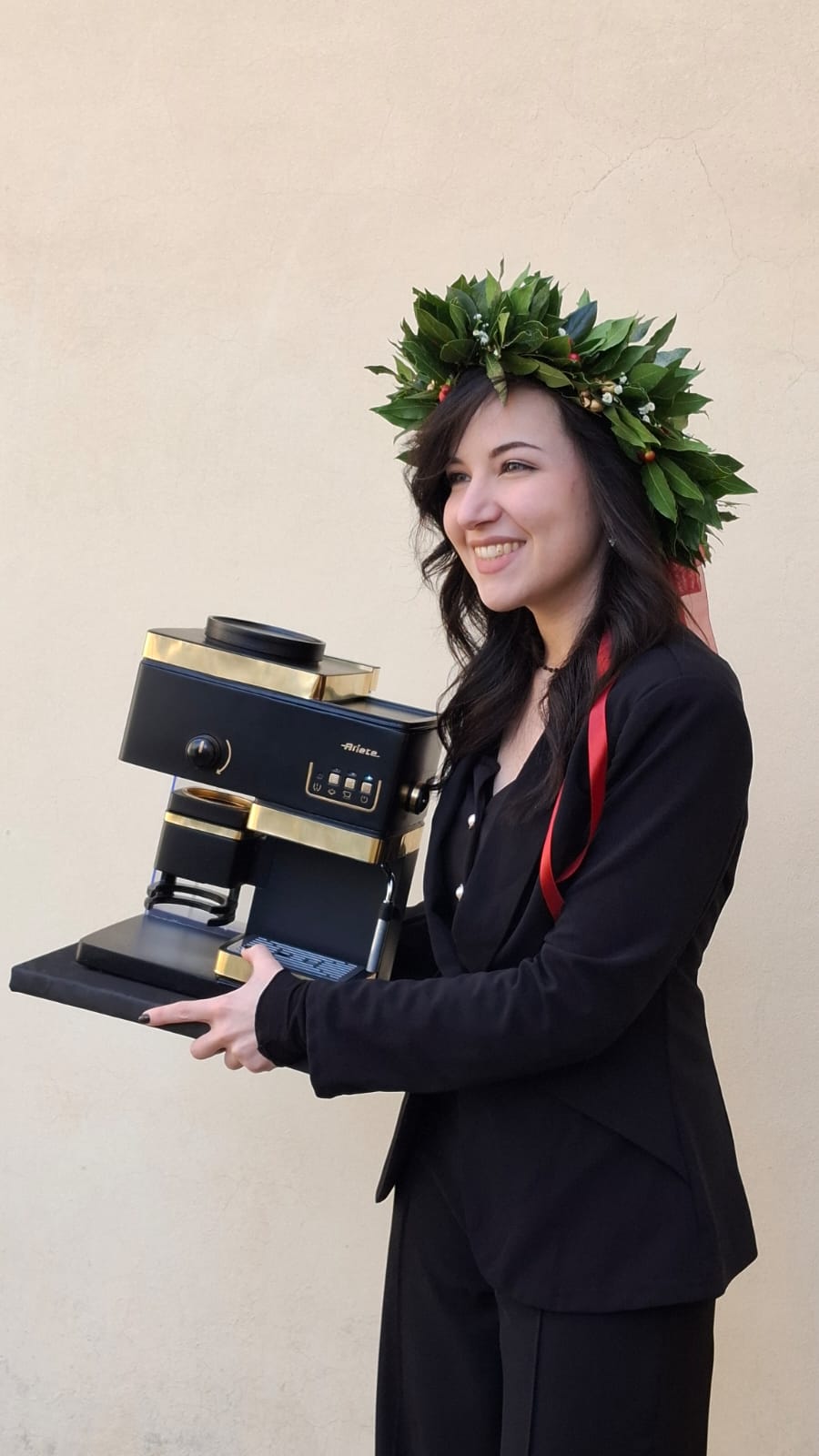What it does
Kuava is a coffee machine that enhances the espresso experience through instant grinding and vacuum-sealed bean preservation, retaining up to 70% more aroma: it doesn't just brew coffee, it delivers the best espresso possible.
Your inspiration
The inspiration came from an everyday moment. As a true Italian, I often drink espresso; one day a friend teased me for adding too much sugar to a coffee from a vending machine. I explained that I only did it because that coffee wasn’t as good as one from a café. That’s when the question came: wouldn’t it be nice to enjoy café-quality coffee, but in the comfort of home? Alongside a university collaboration with a company, I began a research journey that culminated in Kuava. The idea was simple yet ambitious: to bring the coffee moment back to what it once was in Italian tradition — a gesture of pleasure, not a rushed habit.
How it works
Kuava is structured around three main systems: vacuum preservation of coffee beans, instant grinding, and subsequent espresso preparation. The vacuum system, the product’s distinctive feature, preserves the beans’ aroma: during dispensing into the grinder, the beans pass through a sealed outlet duct in the container, which opens only during dosing. This is enabled by a rotating mechanism that extracts the beans and then returns to its original position, ensuring that the remaining beans inside the container never come into contact with air or light. To prevent any air infiltration, a suction pump is activated at the end of the dispensing process to restore the vacuum seal inside the container. The machine also incorporates standard components for the rest of the preparation: an automatic grinder, a water tank, a flowmeter, a vibration pump, a heat exchanger, a thermostat, a coffee dispenser, and a steam wand for preparing espresso.
Design process
Once the concept and basic functions were defined, the design process began with the technical and volumetric analysis of the internal components. I studied dimensions, shapes, and functionality to optimize the arrangement of the elements and build a compact internal structure that could be easily assembled. This phase required careful attention to part compatibility, internal flows, and accessibility for cleaning and maintenance. At the same time, the development of the outer shell and interface focused on usability: visual and sound feedback, intuitive interactions, and simple icons were all studied and designed for serial production using injection molding, sheet assembly, and internal components aimed at optimizing both assembly and cost. Throughout the process, I remained strongly focused on the project’s identity, born from a university collaboration with an Italian home appliance company, and the specific market segment it was designed for: demanding enthusiasts looking for a complete experience. I believe a product is truly necessary when it successfully meets today’s real needs while staying true to the timeless principles of good design, this is the core foundation of my design approach, and, in this case, of Kuava.
How it is different
Kuava fills a gap in the high-quality coffee sector: there was no product that combined all the essential functions for a bar-like experience into a single domestic system. Separate tools already exist, such as professional grinders and food-grade vacuum containers, but not a single machine truly designed to integrate these functions. Kuava is the first to do so, with an approach aimed at coffee enthusiasts, offering not new "gadget" technologies, but a thoughtful optimization of tools working in synergy. From a technical standpoint, the main innovation lies in the container: opaque and sealed, it features an isolated outlet tunnel that activates only during dosing. The rotating dispenser collects about 10 g of beans and automatically recloses to preserve the vacuum; a vacuum pump is triggered afterward to restore the internal pressure. Design features such as sealing sleeves, an airtight cap, and an internal chamber prevent any infiltration.
Future plans
Recently, I had the opportunity to speak with the Industrial Design Manager of the company affiliated with the university, for which Kuava was initially conceived. I briefly presented the concept and proposed a potential collaboration. While waiting for a response, I’m also ready to explore other companies that may be aligned with the project. I strongly believe in Kuava’s value: a simple yet well-thought-out innovation can truly improve the quality of a daily gesture as common and personal as enjoying a good coffee. For this reason, I will continue to pursue every opportunity with optimism.



Connect